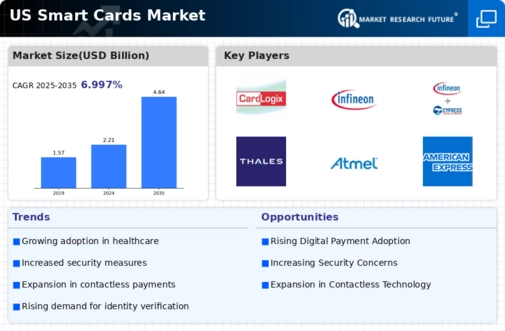The US Smart Cards Market is characterized by a rapidly evolving landscape driven by technological advancements, increasing security concerns, and a growing demand for convenience in various sectors such as banking, healthcare, and transportation. Competitive dynamics are influenced by a range of factors including innovation in chip technology, software development, regulatory requirements, and individual company strategies in addressing consumer needs. The market is populated by a mix of established players and new entrants, necessitating a keen awareness of competitor strengths, weaknesses, and unique selling propositions.
As stakeholders engage with this competitive environment, they must navigate the dual challenges of meeting consumer expectations while also adapting to an accelerated pace of technological change.CardLogix stands out within the US Smart Cards Market due to its strong emphasis on secure connectivity and chip technology most suitable for various applications from healthcare to financial services. Their products are recognized for reliability and cutting-edge security features, catering to both government and commercial clients. CardLogix has built a solid reputation by delivering top-notch solutions that facilitate seamless identification, authentication, and data storage, positioning the company favorably against its competitors.
The firm demonstrates robust market presence, particularly in areas requiring secure transactions and identity management. Moreover, their commitment to user-friendly products and industry collaborations further enhances their strength in the market, allowing them to respond swiftly to customer needs and market shifts. Infineon Technologies commands a significant presence in the US Smart Cards Market, focusing on delivering comprehensive solutions that cater to diverse requirements, such as security chips for payment cards, mobile communications, and electronic IDs. Key products from Infineon include high-performance microcontrollers and secure elements designed to ensure robust security in financial transactions and data protection.
The company continually invests in innovation, enhancing its technological portfolio through a series of strategic mergers and acquisitions aimed at expanding its capabilities and market reach. Infineon's strengths lie in its advanced research and development efforts, which allow it to stay ahead in terms of technological advancements while ensuring compliance with regulatory standards. Their strong partnerships within the ecosystem not only bolster their market position but also signal a commitment to driving progress within the broader landscape of smart card technology in the US.























Leave a Comment